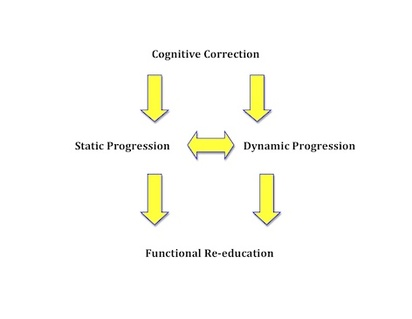|
On Saturday, August 28, 2010, I had the privilege of attending the spine control symposium put forth by the University of Queensland's Centre of Clinical Research Excellence in Spinal Pain, Injury & Health. This was a must symposium for all professionals in the rehabilitation injury who manage low back pain and with the constant growth and debate pertaining to the research in this field, I am truly thankful for such an opportunity to expand my knowledge. As such, I also believe that it is my responsibility to relay that information onto my colleagues and will make an attempt to do so below. Note: Please click here for Part 2 Please be aware that the following information is based on my interpretation of each lecture and therefore, may be subject to "lost in translation". 'Clinical Update: Emerging trends in exercise management of spinal pain' ~ Paul Hodges & Stuart McGill This lecture was the meat and potatoes of the symposium. Dr. Hodges was the main presenter and often asked Dr. McGill to provide some practical insight into some of his interventions for low back pain. While they both stressed that they were likely very similar in their approach to spinal care, it was evident from this talk that the divergence is still glaring. In fact, even the miracle blade could not cut the tension in the air although both were very professional in their "debate". Here are my notes: Basic principles:
5 basic but key components to DYNAMIC CONTROL:
Treatment Goals:
Posture: Dr. McGill gave an example of the importance of posture and its relationship with our breathing. Feel free to perform a self-assessment in the various positions
Movement: Dr. McGill also provided us with a movement correction example
*All three (posture, movement, muscle activation optimization) are important but we as clinicians have to figure out which of these is our priority in treatment." "STATIC STABILITY DOES NOT EQUAL FUNCTION" Interplay between dynamic and stiffness:
"Change in motor control is about looking at the whole system not the parts." Common features of motor control strategies: Dr. McGill on posture correction:
Preservation of feedback control may be via taping:
"NEUTRAL SPINE IS NOT STATIC!"
"The gluteus maximus is a (free) knee extensor!"
Activating the HIGH glutes & glute med:
Activating LOW glutes:
Posture and Movement is about load:
McGill on Bracing:
Hodges: There’s a difference between just making a muscle active (Transversus Abdominis) vs an optimal way of using the muscle:
Hodges: “There is no doubt that Stu and I have differing positions on the role of the deep muscles in the clinical approach but I think it is good that we have different ideas because all individuals patients are different.” "The Transversus Abdominis is not the most important thing in low back pain but our data show that it is the most consistent deficit in low back pain presentation. Therefore it is important to address this muscle as part of the comprehensive package of treating low back pain." "Improving the activation of the deep muscles may decrease the over activity of the global/superficial muscles." Dr. McGill on the Transversus Abdominis:
Dr. Hodges:
*In my opinion, It’s an apples vs oranges debate!" "Train movement control, posture and muscle activity during rehabilitation"
Dr. McGill: “Fix the biggest things first to get them out of pain...THEN fine tune!"
Dr. Hodges’ strategy of multifidus activation:
"There’s something about attention to detail that’s driving changes in neuroplasticity" Dr. McGill:
Dr. Hodges: "Delays are significant in a motor system."
As mentioned earlier, this turned out to be an interesting and enlightening high tension academic debate but both experts argue that it would be most valuable to have a patient on hand to both assess to really truly get an idea of how each think. They agreed that this would truly provide valuable insight into the magnitude of their agreement/disagreement. Out of all of this, they state that there is mostly convergence between the two and that it may be the last (5%)...i.e. their specific methods...that may be different. "Divergence is healthy. Because if not, what would drive research?" *The purpose of everything is the individualized goals of each patient. That’s it!
0 Comments
Leave a Reply. |
